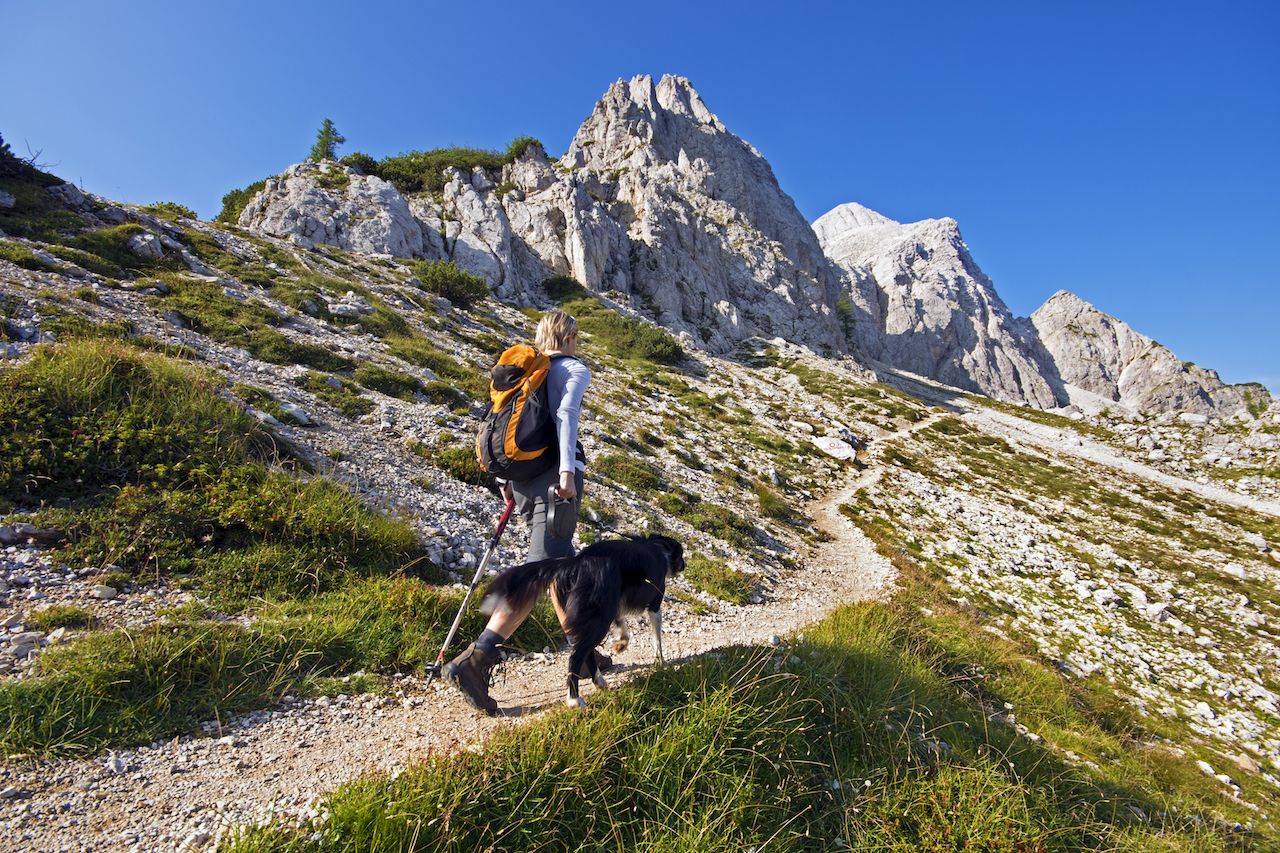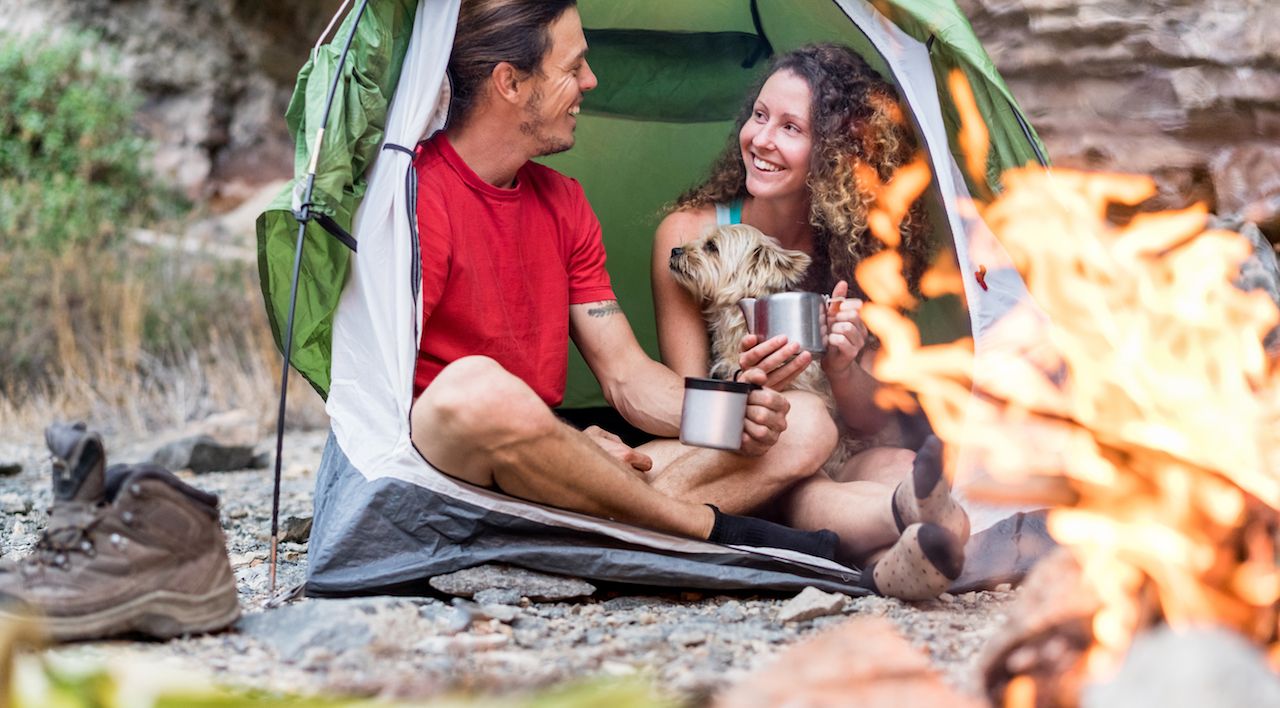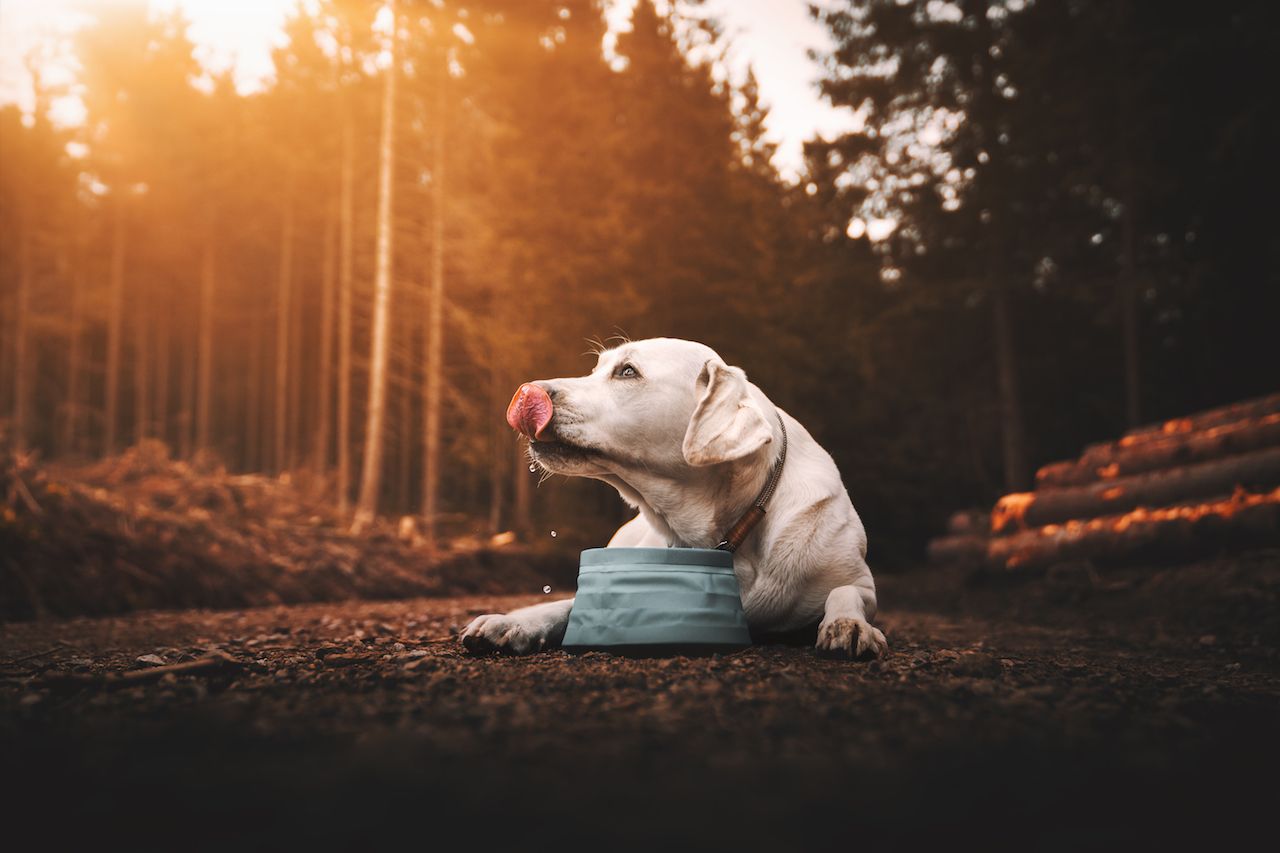Arrive late at night at a campground with your dog in tow, and others may wonder how you’ll ever get your dog to sleep there rather than back in your warm, cozy house. While squeezing in a tent with your furry friend may not be the most glamorous part of taking your dog into the great outdoors, the next morning, your pup will be in doggy paradise, and it’ll all have been worth it.
Whether at a coastal campground, in the desert, or at a forested mountain spot, the outdoors is where most dogs are in their element. But the outdoors can carry risks for your four-legged companion — like exposure, other animals, cliffs, and thirst — as it does for humans. Here’s how to be sure your dog has just as good a time as you do.








